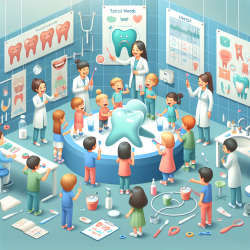Introduction
The COVID-19 pandemic has significantly altered daily routines worldwide, impacting physical activity (PA) levels and mental well-being. A recent study titled "Physical activity and mental well-being under COVID-19 lockdown: a cross-sectional multination study" highlights these changes across four Western nations. This blog explores how practitioners can leverage these insights to enhance therapy outcomes for children, particularly in speech language pathology.
Key Findings from the Study
The study surveyed 2,541 participants from the USA, UK, France, and Australia, examining changes in PA, sedentary behavior, and mental health during COVID-19 lockdowns. Key findings include:
- A significant decline in planned PA, particularly among young adults in Australia and the USA.
- A reduction of approximately 2,000 steps per day across nations, equating to a non-expenditure of about 100 kcal daily.
- Increases in sedentary behavior, with young adults showing the most significant rise in sitting and screen time.
- A notable decline in mental health, more pronounced in women across all countries.
Implications for Child Therapy
For practitioners in speech language pathology, understanding the interplay between physical activity and mental well-being is crucial. Here are ways to integrate these insights into therapy:
- Encourage Physical Activity: Incorporate movement-based activities in therapy sessions. Activities like interactive games or exercises can enhance engagement and improve mental well-being.
- Monitor Sedentary Behavior: Advise caregivers to limit screen time and encourage regular breaks for physical activity. This can help mitigate the negative impacts of prolonged sedentary behavior.
- Focus on Mental Health: Be attentive to signs of mental distress in children. Collaborate with mental health professionals to provide comprehensive support.
Encouraging Further Research
While this study provides valuable insights, further research is needed to understand the long-term impacts of reduced PA and increased sedentary behavior on children's development. Practitioners are encouraged to contribute to research efforts by collecting data on therapy outcomes and sharing findings with the broader community.
Conclusion
Integrating physical activity insights into therapy can significantly enhance outcomes for children. By encouraging active lifestyles and being mindful of mental health, practitioners can support holistic development in their young clients. For more detailed insights, practitioners are encouraged to read the original research paper: "Physical activity and mental well-being under COVID-19 lockdown: a cross-sectional multination study".










